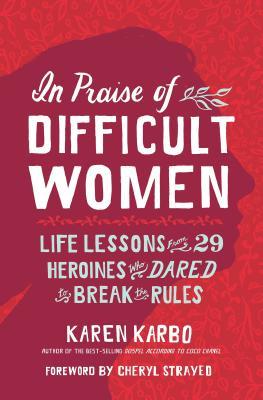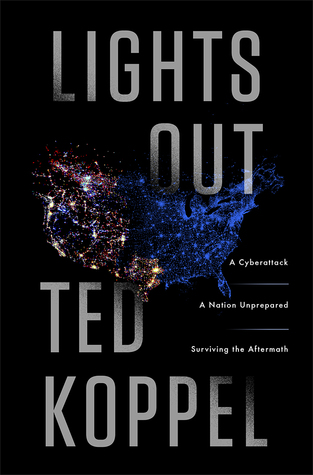Synopsis
Moneyball meets
medicine in this remarkable chronicle of one of the greatest scientific
quests of our time—the groundbreaking program to answer the most
essential question for humanity: how do we live and die?—and the
visionary mastermind behind it.
Medical doctor and economist
Christopher Murray began the Global Burden of Disease studies to gain a
truer understanding of how we live and how we die. While it is one of
the largest scientific projects ever attempted—as breathtaking as the
first moon landing or the Human Genome Project—the questions it answers
are meaningful for every one of us: What are the world’s health
problems? Who do they hurt? How much? Where? Why?
Murray argues
that the ideal existence isn’t simply the longest but the one lived well
and with the least illness. Until we can accurately measure how people
live and die, we cannot understand what makes us sick or do much to
improve it. Challenging the accepted wisdom of the WHO and the UN, the
charismatic and controversial health maverick has made enemies—and some
influential friends, including Bill Gates who gave Murray a $100 million
grant.
In Epic Measures, journalist Jeremy N. Smith
offers an intimate look at Murray and his groundbreaking work. From
ranking countries’ healthcare systems (the U.S. is 37th) to unearthing
the shocking reality that world governments are funding developing
countries at only 30% of the potential maximum efficiency when it comes
to health, Epic Measures introduces a visionary leader whose
unwavering determination to improve global health standards has already
changed the way the world addresses issues of health and wellness, sets
policy, and distributes funding.
Hardcover, 352 pages
Published April 7th 2015 by Harper Wave
ISBN 0062237500 (ISBN13: 9780062237507)
About the Author
Jeremy N. Smith has written for Discover, the Christian Science Monitor, and the Chicago Tribune, among many other publications. His first book, Growing a Garden City, was one of Booklist's top ten books on the environment for 2011. Born and raised in Evanston, Illinois, he is a graduate of Harvard College and the University of Montana. He lives in Missoula, Montana, with his wife and young daughter.
Check out the author's website
My Thoughts
If we want to improve how we live as well as how we die, we need to know the full measure of our diseases and disabilities-- what doesn't kill us as well as what does.
Dr. Christopher Murray had an unusual upbringing. At 10 years of age, he was living in Diffa, Niger where his missionary parents were running a clinic. Chris and his sister Megan and brother Nigel were all put to work at the clinic, where 10-year-old Chris found himself working as pharmacist and errand boy.
While there, the family made the discovery that the malnourished seemed almost entirely free of "malaria and common viral illnesses", yet days after being given food and medicine these same people would become horribly ill from those same illnesses they appeared free of just days before. The family theorized that the virus was as dependent on iron as humans, and the fact that these malnourished people had anemia left the virus starved and spent. Once they were on a healthy diet, including iron, the virus thrived. So food and vitamins could kill these people, if the virus was left untreated!
The family (minus young Chris, who was too young to have participated in the study) published an article about their findings in
The Lancet on March 22, 1975.
It was experiences like this that led Chris Murray to conclude:
Conventional wisdom can kill.
Murray went on to attend Harvard in 1980, and was chosen as a Rhodes scholar his senior year. It was while on tour of the World Health Organization (WHO) in 1985 that he found himself awed by the same organization he would one day challenge. Murray would later introduce himself to Alan Lopez of WHO and tell him that "...everything you've written about mortality in Africa is wrong". Murray and Lopez would go on to become friends and co-founders of the Global Burden of Disease Study, which would turn the world of epidemiology on its head.
The author first met Chris Murray in 2012, and he describes him as "blunt, often abrasive, hyperenergetic, supremely confident, yet fiercely collaborative", and overall just plain fascinating. He notes that Murray was argumentative and loved an open dialogue; "the push and pull of other people's ideas and willing to listen to any serious proposition, no matter the source".
Many others entered Murray's orbit and played a part in the change that came about in the world of epidemiology and continues to this day. One of those people is Bill Gates, who was impressed with Chris Murray's vision and funded the Institute for Health Metrics and Evaluation with $105 million in 2007.
I could go on and on. Chris Murray is my new imaginary boyfriend. What he does with "Big Data" makes me weak in the knees. He was behind the creation of the GBDx, which was a software platform for compiling, organizing and displaying all of the data regarding the health of the world. They can click on a country and instantly see a visual representation of all of the conditions and diseases impacting the health of the people of that country, This is exactly the type of thing I would do, if I had Murray's skills! My brain naturally wants to organize data in this manner and make sense of it. This is the type of project that I would find "fun".
I would like to thank TLC Book Tours and HarperCollins for including me on this tour. Check out the website for the full tour schedule:
Tuesday, March 28th:
Lit and Life
Thursday, March 30th:
bookchickdi
Friday, March 31st:
Cerebral Girl in a Redneck World
Tuesday, April 4th:
Sapphire Ng
Wednesday, April 5th:
Readaholic Zone
Thursday, April 6th:
Man of La Book
Monday, April 10th:
Doing Dewey
Tuesday, April 11th:
Based on a True Story
Wednesday, April 12th:
Kissin Blue Karen
Friday, April 14th:
Read Till Dawn
Friday, April 14th:
Jathan & Heather
My final word: I was concerned going into this that I would find this book and/or the material boring. No worries! I loved this book! I think Chris Murray is a fascinating character. He has a brilliant mind, and a knack for seeing (and convincing others) that spending some money on world health can save the world billions in the long run. Unhealthy people are a drag on society, and healthcare for all should be a priority!
The author does a great job of making this information readable. Knowing how ornery Murray can be only makes him more human to me. The author takes what could have been a very dry and boring read full of data and turns it into what almost feels like a thriller as you follow along with Murray's endeavors. Especially fitting for this day and age, I strongly suggest everyone read this one. It brings forth an important message-- and my imaginary boyfriend is fantastic in it!
Buy Now:
HarperCollins
Amazon
Barnes and Noble
IndieBound
My Rating:
The Cerebral Girl is a forty-something blogger just digging her way out from under a mountain of books in the deep south of Florida.
I received a copy of this book to review through TLC Book Tours and the publisher, in exchange for my honest opinion. I was not financially compensated in any way, and the opinions expressed are my own and based on my observations while reading this novel.









































